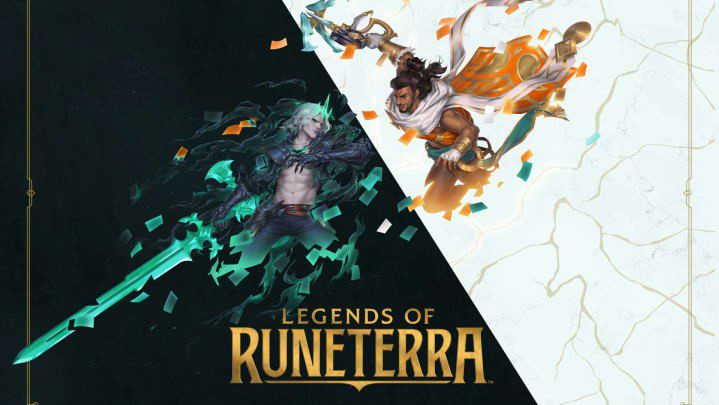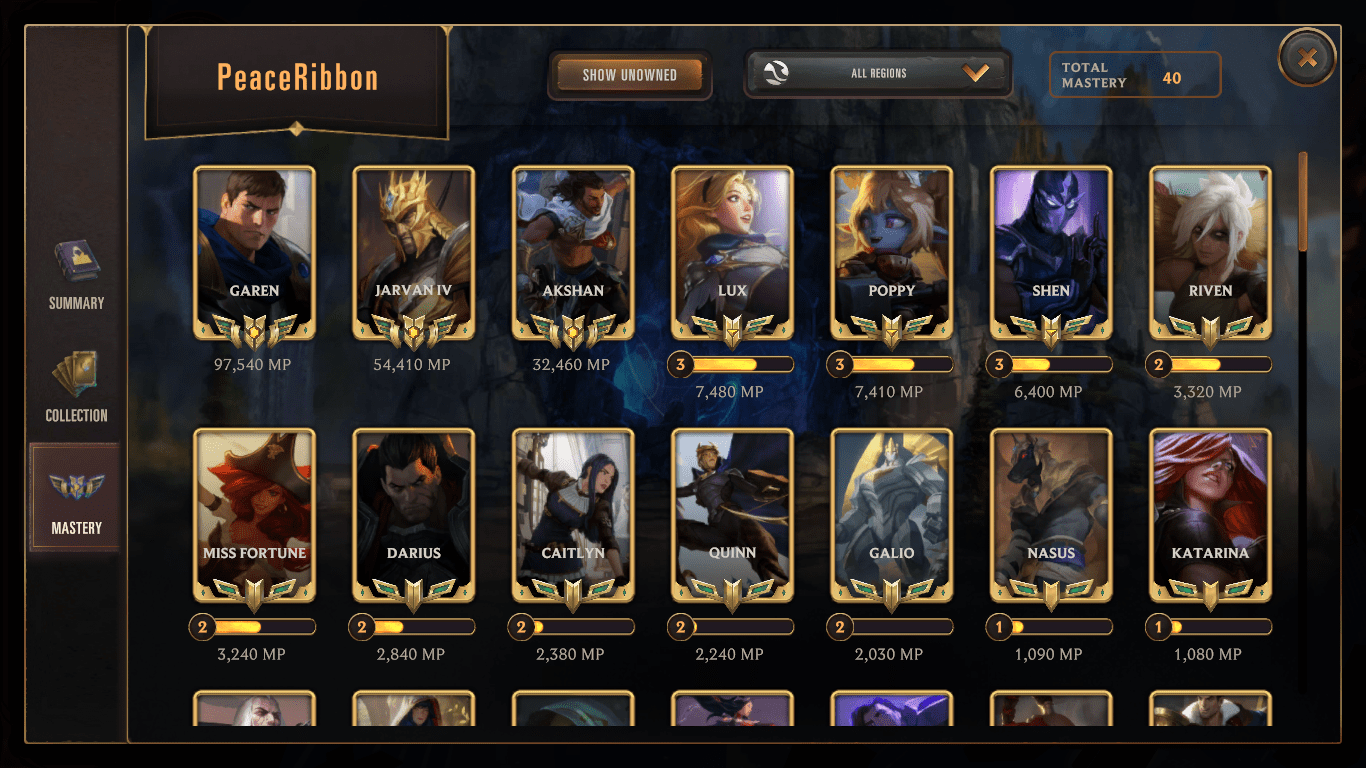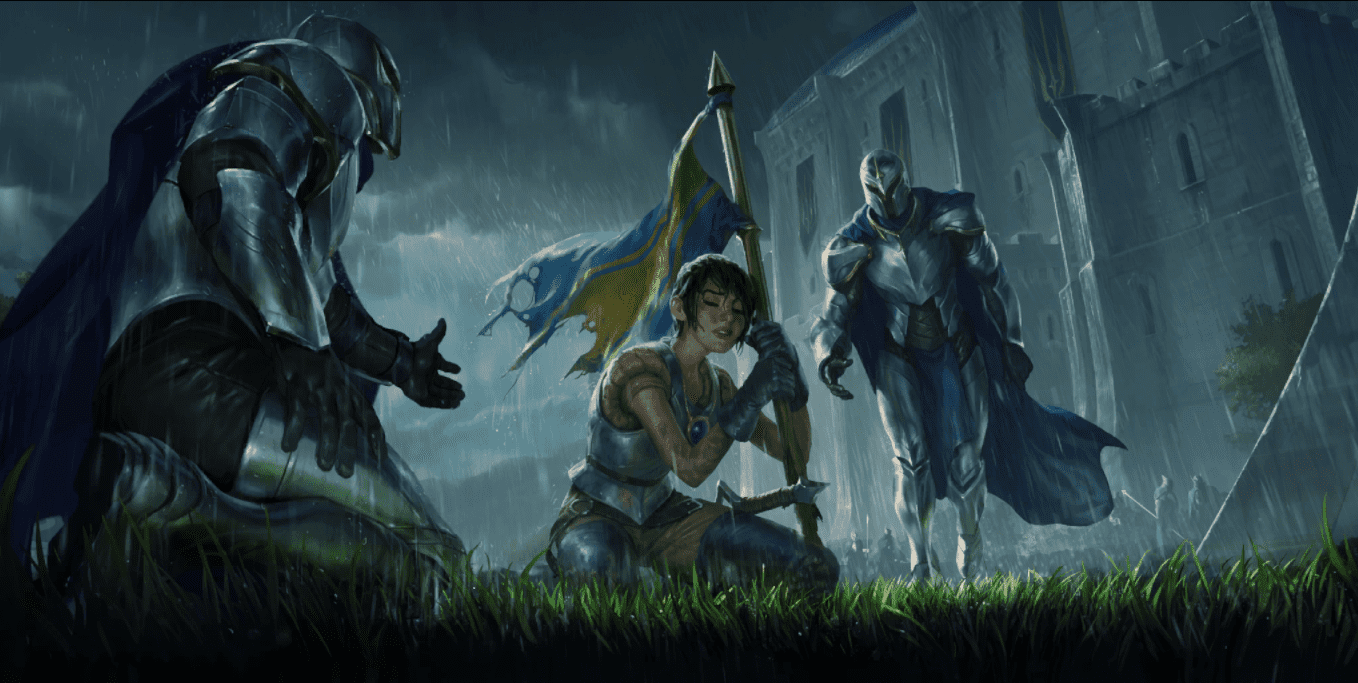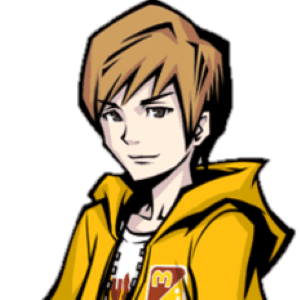Given that in my previous review of Legends of Runeterra I stated the importance of giving an opinion on live-service games in spite of their fluctuating and ephemeral nature, one might find my creation of an update article to be a little out of said review’s spirit. However, aside from my personal conviction that update reviews will make for an interesting bit of historical record keeping, Riot Games’ premier card game has likely garnered more attention than ever, with last year’s wildly successful Netflix series Arcane putting the world of Runterra on the center stage of pop culture. Keeping apprised of the game’s status has become more important, and I am eager to meet that demand. Today’s article will be a little different, as rather than seeking to evaluate the game from the ground up, it will summarize the updates and changes in direction which have transpired since the last review. Bear in mind that this review was written during patch 3.2.

The first major change came in patch 2.3 (March), with the debut of the Empires of the Ascended card set which would be added in three waves, the other two waves dropping in patches 2.7 (May) and 2.11 (June). This set featured one new suit of cards for each existing region as well as introducing the ninth region, the Egyptian mythology themed desert of Shurima. Mechanically speaking they have the greatest emphasis on Landmarks out of every region (cards which are not units but take up space on the board for various purposes) and tend to have a heavy emphasis on playing and generating value from their champions, in exchange for having follower cards with a lower overall power budget. Overall it has been a fairly positive addition to the game, as while some of its major cards were quite overstated in their base forms as what felt like a means of artificially making the region better on launch, in general the decks featuring the region have interesting play patterns that encourage the conversational play at the heart of the game’s appeal. If I had to declare one mechanic I disliked from this expansion on a fundamental level it would be Lurk, since that deck plays the same every time you face it yet whether you win or lose against it is based almost entirely on whether or not they draw Rek’Sai or Pyke (in other words, luck). And hey, one dud out of seven new champions is pretty good!
Patch 2.3 also introduced the champion mastery system, a callback to League of Legends where using the same champion in your deck overtime will rack up points and give you a small mastery flair to show off how dedicated you are/were to playing with them. This was a very minor addition in the long run, but it is satisfying to see the game acknowledge your strategic biases, and in some ways I think the system will help creative minded players take stock of the deck archetypes they haven’t yet explored. As for me, it’s a testament to my (mostly) unyielding refusal to play decks without Garen in them.

During the Empires period we also got patch 2.8 (May) which marked the return of non-canon alternate universe cosmetics into the game, as well as the new champion skin cosmetics. In my previous review I made a pretty big fuss over the K/DA content, but as I specified, the main issue was the cards and not the idea of non-canon cosmetics itself. Champion skins offer a strange middle ground, as while equipping them breaks the artistic cohesion of the characters in one sense, their status as paid optional content helps to lessen my contempt for them considerably, to about the same level as cosmetics in most other games. The skins themselves are extremely contentious among the LoR community though, as they are priced at 10 to 15 dollars each depending on how much alternate art and effects come with them (they aren’t exactly 10 to 15 dollars, but with the way the game’s coinage works that’s the minimum amount you need to add to pay for them), and unlike boards, pets, and cardbacks, you don’t really get to enjoy these skins in game if you don’t draw the cards from your deck. These heavy downsides have left me with little desire to try one myself anytime soon, but their value might be different to you so I won’t say not to buy them if you really want them. At the very least the more recent skins have had a greater amount of effort put into them so hopefully one day they’ll reach their true potential. While on the subject of patch 2.8, I should mention that this patch included a variety of pride month items handed out to players free of charge. They actually did the same in 2020 as well, but they were minimal enough that I felt they might in time lose their original meanings and just become “rainbow pet” items. The ones added in 2021 are inexorably intertwined with the sexual philosophies of our time though, so if their presence bothers you it is worth considering before playing the game.
The Empires of the Ascended era finished off with a bonus expansion in patch 2.12 (July) centered around the Sentinels of Light event which took place in all of Riot’s games, featuring two new card suits released outside of the normal expansions. While there really isn’t too much more to say about it content wise, I did want to pay kudos to the introduction of the champion Akshan. It would be well enough on its own that his is one of the most mechanically unique yet flexible designs in the entire game which can be included in a variety of decks, on top of the fact that all of Akshan’s cards somehow manage to both mechanically and thematically make you feel like you’re acting out a heist film in digital card form. But what really stands out about this champion most of all is that Legends of Runeterra was the game he made his playable debut in. It’s simply wild to think that this lowly spin-off game has risen to enough prominence that it can carry the honor of not only fleshing out its setting, but also introducing brand-new facets to it. I’m not holding my breath for something like this to happen again, but if it has the level of quality that Akshan got then I am very excited by the prospect.
The next major era of the game, which is currently moving into its twilight months, came with patch 2.14 (August) in the form of Beyond the Bandlewood, which would also have other waves released in patch 2.21 (December) and in the current patch. Once again each region received a new suit of cards in addition to the introduction of the tenth and final region, the faerie-esque home of the yordles, Bandle City. This region’s main mechanical strength lies in having lots of ways to generate extra cards to maintain hand size and features a variety of followers that seek to win in quantity over quality. They also have a unique multi-region mechanic, where a good number of their cards belong to both Bandle City and one of the other nine regions, meaning players can include them in their decks so long as they’re playing in at least one of the card’s two regions. Their weakness comes in the form of… uhh… slightly below-average statlines and uh… poor board wipes…?
Ok look, I will admit that since we’re technically still in the heat of the Bandlewood era the recency bias might be affecting my perception of the situation, especially considering that Shurima had some wonky power levels which were addressed in due time. WITH THAT SAID… I think many players would agree with me in saying that Bande City feels like the artificial power pushing of those certain Shurima cards if it were applied to nearly the entire region. In theory it would make sense that the region with the most interaction with region identity has tools that made them a desirable secondary region for all of the other factions, but in practice it has so many of the mechanics and utility of the other regions that not only does it complement those archetypes, but seems to do it better than the parent regions. Needless to say, Bandle City has so far been one of the most polarizing additions to the game of all time, beaten out only by Irelia and the blade dance suit which has since been nerfed heavily. While things are no longer as bad as they were before the Christmas break nerfs to some of Bandlewood’s most suffocating cards, yordles still enjoy spots near the top of tier lists and it has been a trying period for the game. Poppy may have been neutralized, but we’re still dealing with a parade of Viegar control decks that exist solely to spite me (and I can’t comment too much on Gnar and Yummi since they’re brand new, but don’t be surprised if Yummi in particular gets out of hand).
Thankfully the latter part of last year had something going for it, as amidst all the chaos we were graced with patch 2.19 (November), which featured one new suit of cards for Piltover and Zaun, as well as bringing the new Path of Champions mode permanently into the fold. Path of Champions is a single player mode, spiritually succeeding the Lab of Legends, which tasks players with choosing a champion (from a limited selection which will expand overtime) and embarking on roguelite gauntlets of CPU battles with crazy modifiers for both individual cards and the match in general. The mode is about the furthest thing from balanced as you can get, but overcoming or even breaking these mechanics is exactly what has made it a fun diversion for many, or even the main event for a few. Really there’s not much to complain about regarding the mode itself, as this easily could have been paid DLC and the fact that it’s free is staggering to me. They even added a light story mode for some of the champions, which I’ll be discussing in an article releasing close to this one.
And that covers every major release since version 2.1. So what has been enjoyable about Legends of Runeterra over the past year? As I implied in the last paragraph it continues to maintain its status as one of the least predatory digital card games of all time, offering all of its major content at the low price of having fun with the game and accruing resources at a reasonable pace. Its core gameplay is still entertaining and leaves plenty of room for player expression through deckbuilding, even despite some balancing issues. The addition of Path of Champions is a welcome break from ladder-climbing which is definitely worth taking some time to appreciate. And of course, the card artwork remains as high quality as the base set.

As for what is lacking there’s a few things which deserve some attention. First I want to point out that with the conclusion of Beyond the Bandlewood, the structure of new card releases is now free to expand beyond just focusing on pumping out cards for one new region, and this is very important because the current release structure has been very unkind to the non-featured regions. Freljord and Demacia had their two card suits released in patch 2.3 and the current 3.2, which translates to an unbearable 11 months of waiting for fans of those regions to get significant new tools to play with (which included me). This shouldn’t be too hard for the developers to keep in mind going forward, but this has definitely been a major sour spot. The balancing cadence has also been a very contentious topic amongst the playerbase, considering that many players flocked to LoR with the promise of frequent patches but ultimately found them too few and far between. Personally I try not to be too picky with this because good strategy can often overcome overtuned cards, however I will confess that I hope communication between Riot and their player base improves on this end.
My greatest point of criticism by far though is the slow death of alternative game modes. While the Path of Champions is a great mode, it’s currently occupying the space the rotating Labs used to have, and it is hard not to notice their absence. The current standard format is the only form of ranked play right now, and Gauntlets have been reduced to standard play with slightly higher stakes and maybe a pick and ban phase. Combine all of this with the fact that Expeditions are confirmed to be sunset in the next few months, and it looks as though new set releases might be the only way the game shakes itself up from now on. I still have hope we could get new labs or ideally a new evergreen ranked format, but as of now there’s no indication of either happening. I still love the basic gameplay, but I really want to see some new territory explored rather than endlessly iterating on the basics.
The original review for this title was written before I had the talent to really articulate potential spiritual takeaways from the games I was playing, but honestly I’ll admit that such lessons are more difficult to find in a game like this one. While I guess there could be some efficacious meaning in my battle to find patience in failure against difficult opponents or what have you, the most intellectually and spiritually relevant reflections actually came from the story-mode in Path of Champions, but there’s a separate article for that.
So in conclusion, has Legends of Runeterra been a game worthy of it’s players’ time thus far? Overall I would say it has. The game may be at a concerning turning point where the overall scope of its offerings might end up being downsized and polarized towards a strange environment where you only either play one competitive PvP format or one PvE rouglite, and the balance and region distribution of new cards absolutely has room for improvement. Beyond that though, the core appeal of the card gameplay hasn’t been lost yet, and LoR is still one of the leading paragons of healthy free-to-play practices in the modern era. The momentum this game has managed to maintain is impressive despite debuting long after the digital card game crazes of old and its future looks quite bright, but hopefully it will see its successes not as a call to complacency, but to further excellence.
(Original) Scoring: 80%
Gameplay: 5/5
Story: 2/5
Art and Graphics: 5/5
Music: 3/5
Replayability: 5/5
Comment: With the introduction of Path of Champion’s story routes, I can’t say there isn’t a little bit of an argument to push the number up to a 3/5, however in the end while those stories are fun, they aren’t of enough substance to merit the change in my eyes. There’s a fun conversation to be had about their branching paths, but I wouldn’t call them narrative treasures by any means.
(Original) Morality/Parental Warnings
Legends of Runeterra features characters and creatures inspired by many different types of fantasy and real-world inspirations, and much of it is intertwined with archetypes like magic, monsters, undead spirits, and various cosmic forces as mentioned in the review proper, and could be frightening to younger audiences. A few of the characters are dressed in revealing clothing. A few voice lines include light swearing, and a few characters also have voice lines/artwork that suggest LGBT relationships. Some of the implied story touches thematically on real-world issues, sometimes very clumsily. Online interactions come with all the usual warnings, though communication with players not on your friends list is restricted to emotes. The game features in-game purchases, so take care not to overspend.
Comment: Pride month items have increased in both volume and in their distinction, featuring a wide variety of references to different kinds of pride flags.
